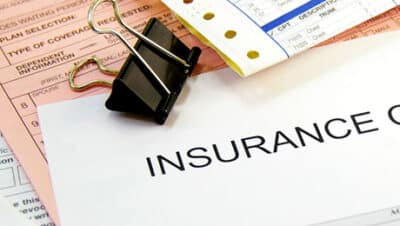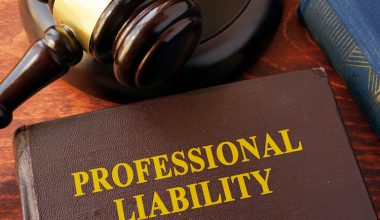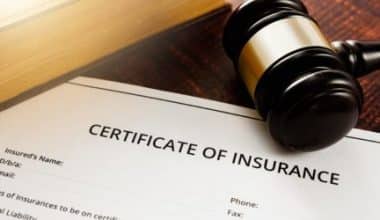You presumably communicate with potential business partners and clients every day as a small business owner. If you intend to deal closely with them, you will almost certainly be requested to provide a certificate of insurance COI at some point.
Here’s what that request means and how to respond to it.
What Is the Meaning of a Certificate of Insurance (COI)?
An insurance company or broker issues a certificate of insurance (COI). The COI confirms the existence of an insurance policy and explains its major features and terms. A normal COI, for example, includes the insurance policyholder’s name, policy effective date, type of coverage, policy limits, and other relevant policy facts.
So, without a COI, a company or contractor will struggle to secure clients; most hirers will not want to take the risk of any costs that the contractor or provider may incur.
When a company employs a contractor or another organization for services, it should obtain a copy of its COI and make sure it is current.
Types of Certificate of Insurance (COI)
Certificates of Insurance are classified into the following categories:
#1. Liability Insurance Certificate
This should be considered not only to safeguard the project owner but also to give the project manager and maybe a lender additional insured status. Examining liability insurance certificates is an important part of risk transfer from the project owner to a third-party provider. Look for some of the following indicators on the COI to ensure that your third-party insurance coverage is adequate:
- Additional insured status is extended to the appropriate entities.
- Describe the operations on which the vendor/subcontractor is working.
- Subrogation waiver
- “Primary and noncontributory” coverage is provided.
You should acquire and review the insurance endorsements for a more accurate examination of this coverage information.
#2. Workers’ Compensation Insurance Certificate
This should be required and documented in accordance with the applicable state statutes and laws.
#3. Auto Liability Insurance Certificate
All vendor-owned, leased, non-owned, and hired cars should be monitored.
Explanation of Additional Insured
The ACORD 25 form, is a standardized template document commonly used to represent any of the five basic types of insurance policies. It is one of the COI papers that BCS handles the most frequently. It will include the named insured—the person or entity with the most responsibility and who pays the premium—as well as any additional insureds listed in the policy.
Additional insureds are permitted coverage under the policy owner’s contract, but they are not responsible for paying the premiums and do not have the authority to change the terms of the policy.
Returning to our hotel building example, further insured endorsements could cascade as follows:
- A general contractor and a hotel owner sign a construction contract. A clause in the contract requires the general contractor to carry commercial general liability insurance for the duration of the project. The hotel chain will be included as an additional insured by the general contractor since, even if the hotel chain is not conducting the work, they may be sued in the event of physical damage due to third-party negligence.
- Following that, the general contractor will obtain an extra insured endorsement from each third-party subcontractor executing work for themselves and the hotel network. If done correctly, this will effectively transfer liability to the subcontractors’ insurance.
What Is the Difference Between COI and Insurance?
It’s one thing for one party to corroborate the evidence that another party’s insurance is in place to cover any property or bodily harm losses. It may request a copy of their insurance coverage.
Another instance is when one party (for example, “Real Estate Corp.”) employs the other party (for example, “Paul the Plumber LLC”) for a project and requires that third party to issue a COI. As previously stated, the COI is a brief document that contains all of the relevant facts of an insurance policy in an easily consumable, standardized format.
When Real Estate Corp. requests that Paul the Plumber produce a COI, it is requesting that the policy be “endorsed” (aka “amended”) so that the policy can offer further insured status to Real Estate Corp. The resulting COI will often include language to the effect of “Real Estate Corp. named as an additional insured”. As a result, if Real Estate Corp. is issued as a result of an occurrence related to Paul’s business, they should be protected by his insurance as well.
Insurance certificates are not permitted to:
- Change the coverage.
- Change the terms of the insurance contract
Checking for COI Compliance
When it comes to insurance compliance, there are various variables to consider.
It is critical that whoever audits your insurance certificates for compliance is disciplined, experienced, qualified, and has a working knowledge of:
- Contract Conditions
- Forms and Standards for ACORD
- Policies of Insurance
- Endorsement Phrases
- Regulations Concerning Workers’ Compensation
The inability to “tender” (aka “push”) claims owing to COI non-compliance could be disastrous, given that verdicts and settlements frequently exceed seven figures.
Much of your due diligence may be reduced to guesswork if you do not use comprehensive document-tracking systems.
Who Is Eligible for an Insurance Certificate?
An insurance company issues certificates of insurance on behalf of the covered party (usually the vendor or contractor). So, typically, an insurance company will provide a copy of the COI—proof that the insurance exists—to the insured party at the time the policy is acquired or upon request.
In turn, when a contracting organization demands proof of insurance, the potential vendor or contractor would submit the COI directly to the customer.
Before authorizing a vendor or contractor to commence work, the client should seek a fresh COI as verification that the changes were made and are in place.
How Do You Get a Certificate of Insurance COI?
If you need to request a certificate of insurance from your insurer, the standard procedure is as follows:
First, ask your client who is requesting the COI what the coverage’s minimums and limits should be. If you need to increase your premium, get your client’s name, address, and tax identification number.
Call your broker and explain that you require a certificate of insurance and the minimum coverage amount. If your policy already fulfills the criteria, the broker will call your carrier to obtain the COI. If you need to purchase a rider to increase coverage for the project, your broker will provide you with the necessary information and documentation.
Once you’re ready, your broker will prepare the COI and provide you a printed certificate of insurance, which you must then deliver to your client in order to complete the transaction and sign your contract to begin your partnership.
While the process is pretty simple, it should be noted that acquiring the COI from your broker may take a few days or even weeks, depending on how easy it is to contact your broker and how quickly he or she is able to complete all essential documentation and supply you with your COI.
When and Where Might You Need a COI?
A certificate of liability insurance may be required to:
- Sign a client agreement.
- Work as a freelancer
- Make a commercial lease agreement.
- Bring in new customers
#1. Sign a client agreement.
In the terms of a contract, a client may request a certificate of insurance. In some situations, your liability insurance may be able to protect your clients from potential losses and damages caused by your company.
A computer repair shop, for example, has a long-term deal with a local company. If a technician inadvertently drops a client’s laptop during a repair, the general liability coverage of the computer repair company covers the cost of replacing the broken laptop.
#2. Make a commercial lease agreement.
A certificate of liability insurance may be required to sign a lease for a new office, storefront, or other business facility.
As an example, your accounting firm recently obtained general liability insurance in order to meet the terms of its new commercial lease. A client slips and falls on your new office’s front stairs and sues. Your general liability coverage will cover the costs of the case for you and your landlord.
#3. Work as a freelancer
Businesses that engage contractors frequently want to know that they will not be held liable if the contractor makes a mistake. Financial losses or damages that arise as a result of the contractor’s work are normally compensated if the contractor has liability insurance – without involving the business that hired the contractor.
A building company, for example, engages an independent contractor to install windows in an office. The finished windows do not meet the contract standards, hence it results in thousands of dollars in overages. The cost of replacing the windows would be paid if the construction business compelled the contractor to obtain liability insurance.
#4. Bring in new customers
Building a solid business reputation is difficult, especially when you’re just getting started. Liability insurance demonstrates to potential clients that your company can endure ordinary accidents and litigation, increasing your trustworthiness.
What is the Cost of a Certificate of Insurance?
A certificate of insurance is actually free because it is a gratis service provided by the firm that gave you your business insurance. If your broker charges you a fee for providing a COI, it’s time to switch.
However, if the work in issue necessitates additional coverage that your policy does not provide, you may be required to pay an additional premium to cover those expenses. Aside from that, your broker should never charge you a fee for giving you a certificate of insurance, regardless of how many you require.
How Long Should I Maintain a COI?
Even after a contractor has delivered a COI, there is little incentive for a client to reject or remove it.
Remember that the purpose of a COI is to offer verification that a contractor held a specific amount of insurance for a specified length of time. While the period of coverage may conclude on a specific date, liability for damages or harm that occurs during that time period may continue even after the project is completed.
For example, the symptoms of an industrial injury induced by the employment of hazardous products on the workplace may not be apparent for months or even years. If they do, maintaining a record of the contractors on the project as well as a certificate of their insurance coverage helps safeguard your company while also ensuring that victims receive adequate reparation.
In the event of a labor dispute, the COI can assist a client organization in proving that a contractor was not hired as a full-time employee. This can be significant in the context of labor disputes involving health insurance policies, paid time off, and other concerns.
To safeguard your company in the long run, a robust COI tracking strategy includes monitoring coverage on present activity and storing prior evidence of coverage.
While the period of coverage may conclude on a specific date, liability for damages or injury sustained during that period may continue even after the project is completed.
Certificate of Insurance COI Monitoring and Management
Many firms rely on ineffective or non-existent document-gathering methods. When we consider that between 36% and 53% of small firms are involved in at least one lawsuit per year, and about 90% of corporations are involved in litigation at any given moment, it’s difficult not to exclaim, “WHY?!?”
Contracts should be in place with every employee and third-party vendor participating in your efforts as a business owner. Because your company is unique, you should customize your contracts to it rather than copying them off the internet. You’ll also need a lawyer to help you structure these contracts.
To measure and track vendor compliance, you should have a certificate of insurance tracking mechanisms in place. Several hundred certificates of insurance and other vendor credentials may be required for some extremely large projects, such as the hotel building mentioned previously. Project managers lack the time and resources to manage all of these documents, maintain compliance standards, track COI expiration dates, and execute projects on schedule.
How Does Coi Money Work?
The sum of money the insurance provider costs to maintain the status of your life insurance policy is known as the Cost of Insurance (COI) payment. Your age and health at the time you apply for coverage will determine how much you pay.
What Is the Purpose of Coi?
An insurance company or broker will provide a certificate of insurance (COI) to confirm the presence of an insurance policy. A COI that offers protection against liability for workplace accidents or injuries is often required for small business owners and contractors to conduct business.
Why Do Businesses Demand Coi?
The COI basically acts as proof of insurance so the other companies you operate with are aware that you have the insurance protections necessary to reduce risks. Before making a commercial agreement, it offers peace of mind.
What Is the Coi Procedure?
When an outside interest or relationship has a connection to a specific research project and has the potential to materially and adversely affect the research or bias it, the project’s COI is determined (or present the perception thereof). COIs need to be managed, decreased, or eliminated.
What Does Coi Mean When It Comes to Contracts?
A certificate of insurance demonstrates to prospective clients and partners that your company is adequately insured and that doing business with you is secure.
COI Insurance FAQs
Why do companies ask for certificate of insurance?
It demonstrates to potential clients that you have adequate liability limits to protect your job. Knowing how to obtain a COI is critical to running your business.
What is the difference between insurance policy and insurance certificate?
The phrases insurance policy and insurance certificate are not interchangeable. The insurer’s coverage plan is referred to as an insurance policy. The Certificate of Insurance is a document that indicates your vehicle is insured.
Who is the certificate holder on a COI?
The certificate holder is the one who receives the COI from the insured. The insured is presenting the COI to the certificate holder to demonstrate that they have adequate coverage.






